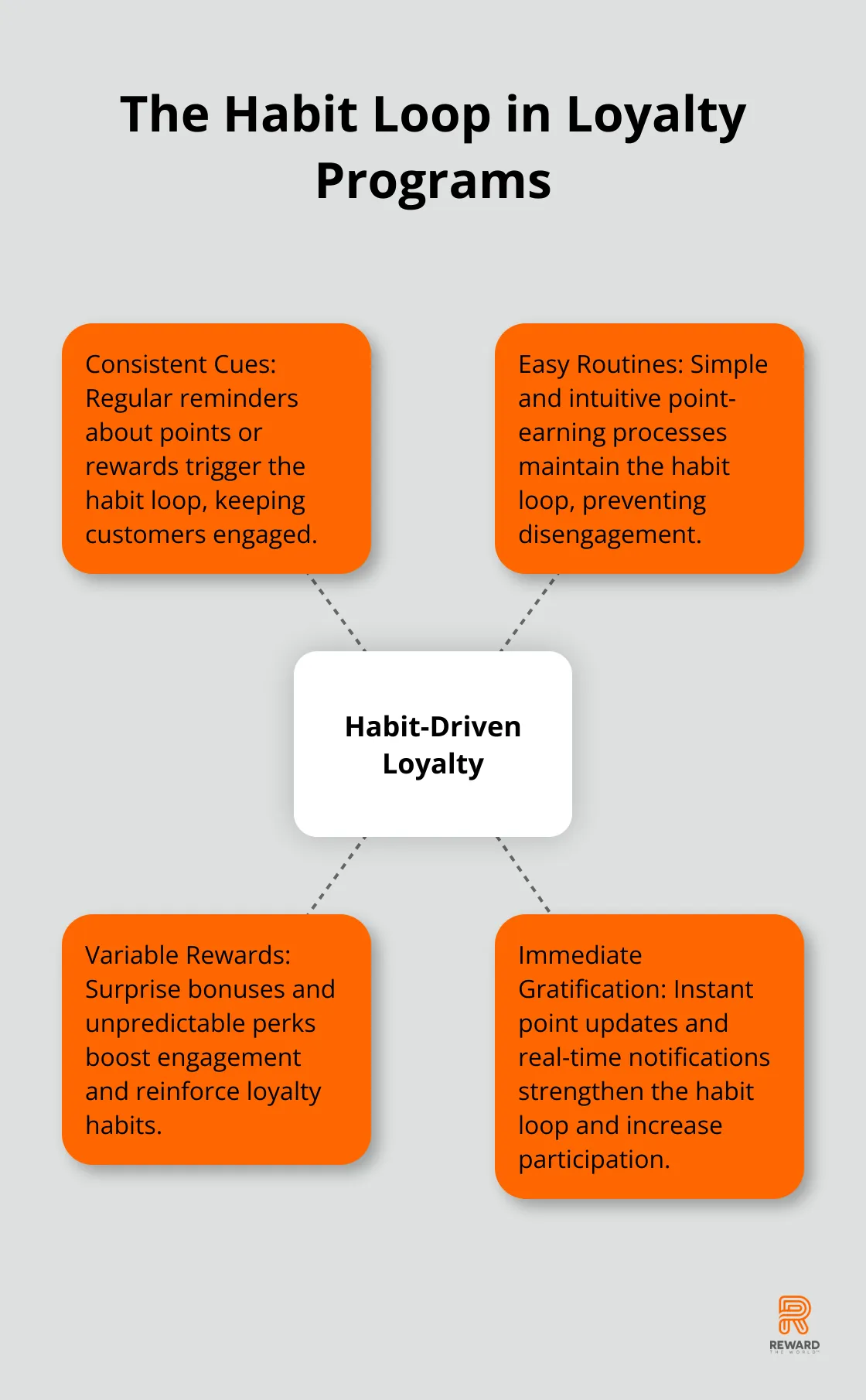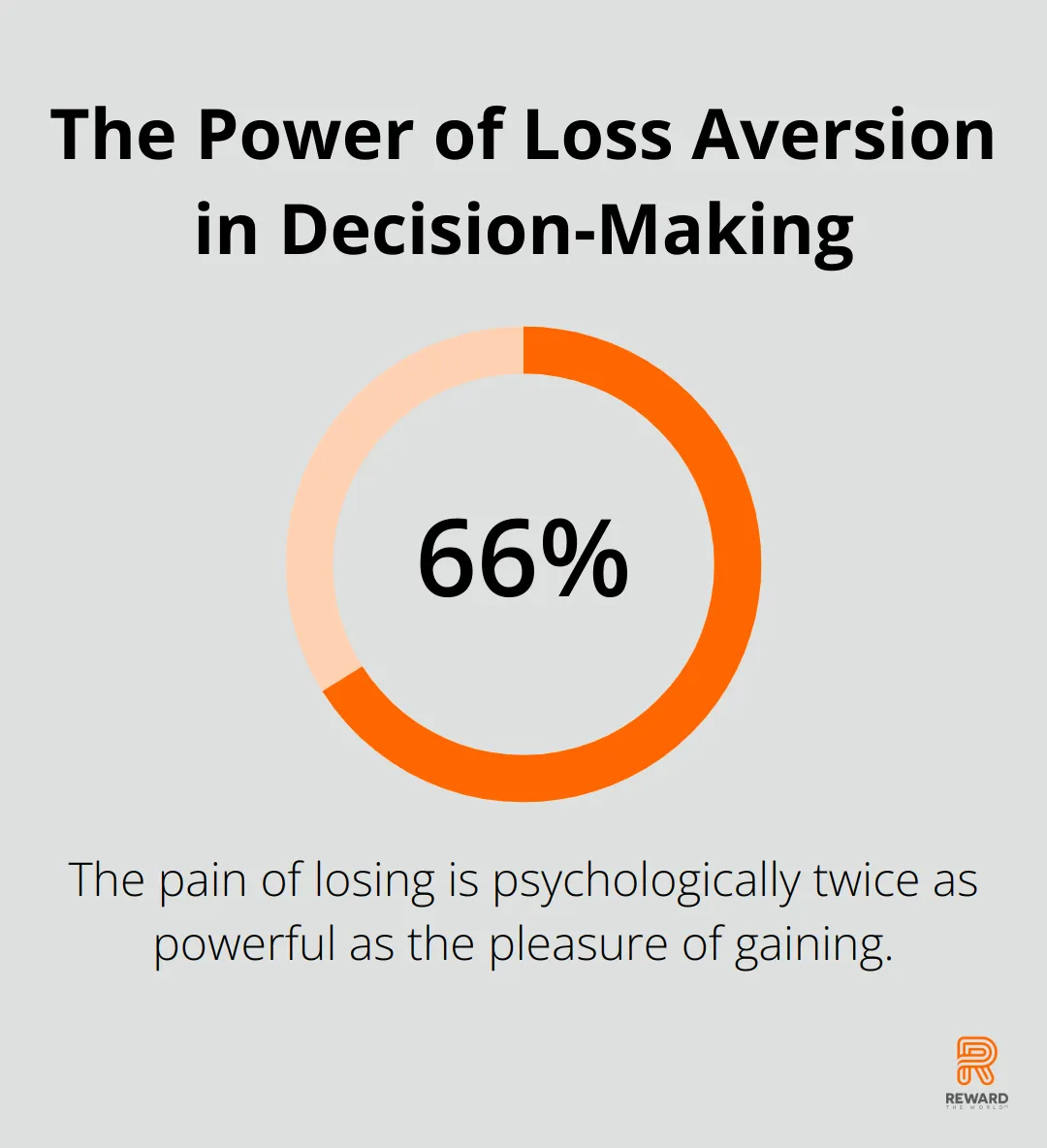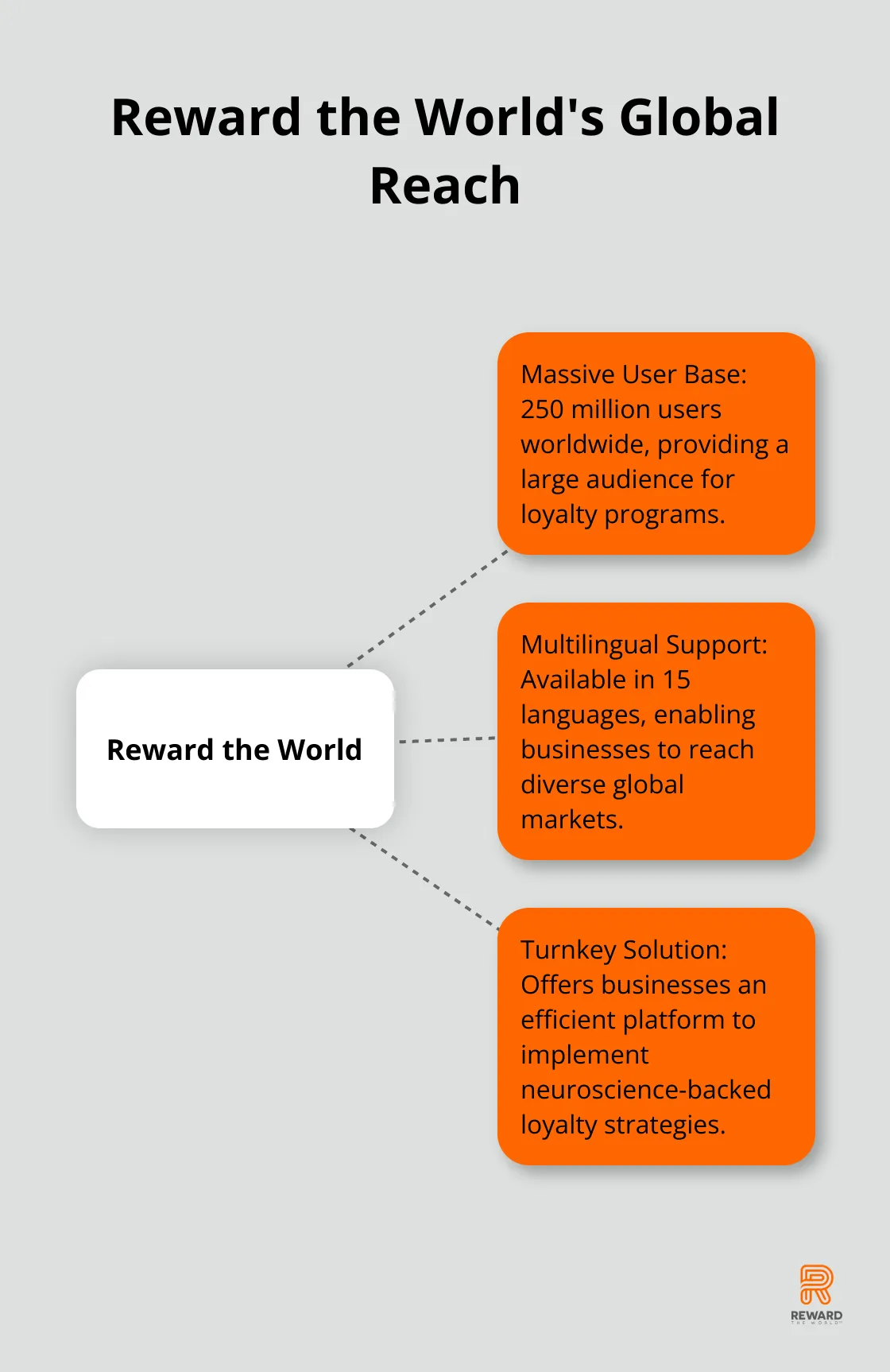
At Reward the World, we’re diving deep into the fascinating world of neuroloyalty.
Brain science holds the key to creating loyalty programs that customers can’t resist.
By understanding how our minds work, we can design experiences that tap into our deepest psychological triggers and form lasting habits.
In this post, we’ll explore the cutting-edge strategies that blend neuroscience and marketing to revolutionize customer engagement.
How Habits Shape Loyalty
The Habit Loop: Cue, Routine, Reward
Understanding habit formation is essential for creating loyalty programs that stick. Habits form the backbone of customer behavior, and tapping into them can lead to long-term engagement and brand loyalty. Research shows that habit-driven behaviors significantly improve customer retention. When a customer has developed a habit loop around your brand, they will be more likely to continue engaging with your loyalty program.

The Power of Dopamine
Dopamine, often called the “feel-good” neurotransmitter, plays a significant role in habit formation and reward-seeking behavior. When customers earn points or receive rewards, their brains release dopamine, creating a positive association with the brand. Research shows that faster delivery of rewards is associated with faster striatal dopamine increases and greater metabolic activity in brain reward regions.
Strategies for Habit-Forming Loyalty Programs
To create habit-forming loyalty programs, companies should consider these strategies:
- Consistent Cues: Send regular reminders about points or rewards to trigger the habit loop.
- Easy Routines: Make earning points simple and intuitive. Complicated processes can break the habit loop.
- Variable Rewards: Surprise customers with unexpected bonuses. Variable rewards such as unpredictable perks (e.g., surprise freebies, mystery discounts) can spur action and boost engagement.
The Importance of Timing
The timing of rewards is critical. Immediate gratification strengthens the habit loop. Instant point updates and real-time reward notifications can increase program participation.
Ethical Considerations
While these strategies are powerful, it’s important to use them responsibly. The goal should be to create value for both businesses and customers, not to manipulate. Understanding and ethically applying the science of habit formation can lead to the design of loyalty programs that are not just effective, but also beneficial for all parties involved.
As we move forward, we’ll explore how psychological triggers can further enhance the effectiveness of loyalty programs, building on the foundation of habit formation to create truly irresistible customer experiences.
The Psychology of Irresistible Rewards
The Power of Loss Aversion
Loss Aversion is a potent force in human decision-making. This cognitive bias makes the pain of losing psychologically twice as powerful as the pleasure of gaining. We can apply this principle to loyalty programs to drive engagement.

To implement this:
- Set expiration dates on points or rewards
- Create limited-time offers
- Use countdown timers for special promotions
Unpredictability: The Secret Sauce
Variable reward schedules keep customers engaged by tapping into our natural love for surprises. This principle explains the addictive nature of slot machines.
In loyalty programs, we can use this by:
- Offering surprise bonuses or rewards
- Creating “mystery” rewards that reveal after a purchase
- Implementing a “spin-to-win” feature for bonus points
Harnessing the Power of Social Proof
Humans are social creatures, and the actions and opinions of others heavily influence us. This makes social proof a powerful tool in loyalty programs.
To leverage social proof:
- Showcase top members or their achievements
- Display real-time activity feeds of points earned or rewards redeemed
- Implement referral bonuses to encourage word-of-mouth marketing
Consumer behavior studies show how individuals select, purchase, use, and dispose of goods and services, reflecting their needs, desires, and aspirations. Incorporating social elements can tap into this understanding and boost program participation.
These psychological triggers can dramatically increase engagement in loyalty programs.
It’s important to use these psychological triggers ethically. The goal should always be to create genuine value for customers (not to manipulate them). When done right, these strategies can create a win-win situation, boosting customer loyalty and business success.
Now that we’ve explored the psychological principles behind effective loyalty programs, let’s examine how neuroscience can inform the design of these programs to create even more compelling experiences for customers.
How Neuroscience Supercharges Loyalty Programs
Personalization: The Brain’s Reward Center Activator
Neuroscience research reveals that personalized experiences activate the brain’s reward center more intensely than generic ones. A University of Texas study found personalized content increased activity in the ventral striatum (a key part of the brain’s reward system).
To leverage this:
- Use data analytics to understand individual customer preferences and behaviors.
- Offer tailored rewards based on past purchases or browsing history.
- Implement AI-driven recommendation engines to suggest personalized rewards.
For example, if a customer frequently buys eco-friendly products, offer them rewards from sustainable brands. This approach increases engagement and strengthens the emotional connection between the customer and your brand.
Gamification: Challenging the Brain for Dopamine Release
The human brain thrives on challenges and achievements. Gamification in loyalty programs triggers the release of dopamine, the neurotransmitter associated with reward and motivation.
Effective gamification strategies include:
- Creating tiered loyalty levels with clear progression paths.
- Implementing point multipliers for specific actions or time periods.
- Offering badges or virtual trophies for reaching milestones.
Starbucks’ star system exemplifies this approach, gamifying the coffee-buying experience and keeping customers coming back for more.
Instant Gratification: The Brain’s Preference for Immediate Rewards
Neuroscience indicates that immediate rewards motivate more than delayed ones. This stems from hyperbolic discounting, where the brain values instant rewards more highly than future ones.
To harness this:
- Provide instant point updates after every purchase.
- Offer small, immediate rewards alongside larger, long-term ones.
- Use push notifications to alert customers about earned rewards in real-time.
Amazon Prime’s instant video streaming benefit (which provides immediate value alongside longer-term shipping benefits) illustrates this principle effectively.
Ethical Application of Neuroscience in Loyalty Programs
While these strategies prove powerful, their ethical application remains paramount. The goal should focus on creating genuine value for customers, not manipulation. Balancing neuroscience-backed techniques with customer-centric practices ensures a win-win situation for both businesses and consumers.
Reward the World stands out as a prime example of a platform that ethically applies these neuroscience principles. With its vast user base of 250 million and availability in 15 languages, it offers businesses a turnkey solution to implement these strategies effectively and responsibly.

Final Thoughts
The intersection of neuroscience and loyalty programs revolutionizes customer engagement strategies. Neuroloyalty principles, such as habit formation, psychological triggers, and brain-backed design, create truly irresistible programs. These powerful tools enable marketers to enhance customer loyalty and drive engagement through personalization, gamification, and instant gratification.
Ethical application of psychological and neuroscientific insights remains paramount. We must create genuine value for customers, not manipulate them. The future of customer engagement lies in the responsible use of neuroloyalty principles, with AI and machine learning playing significant roles in tailoring experiences to individual preferences.
Businesses can implement these cutting-edge strategies through platforms like Reward the World. This turnkey solution (with its vast user base and multilingual capabilities) provides an ideal platform for leveraging neuroscience-informed loyalty programs effectively and responsibly. As we unlock more brain secrets, the potential for creating meaningful, engaging, and ethical loyalty programs continues to grow.
